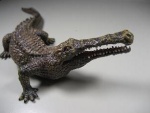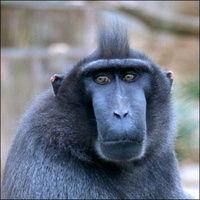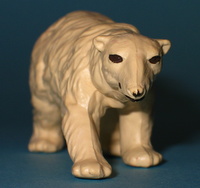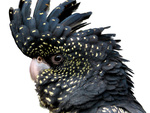| | Mathison Museum of Natural History |  |
|
+15Caracal widukind lucky luke Megaptera rogerpgvg Jill sunny pipsxlch Saarlooswolfhound landrover Kikimalou Taos Duck-Anch-Amun Shanti Saien 19 posters |
|
| Author | Message |
|---|
widukind

Country/State : Germany
Age : 48
Joined : 2010-12-30
Posts : 45745
 |  Subject: Re: Mathison Museum of Natural History Subject: Re: Mathison Museum of Natural History  Sun Nov 12, 2023 5:20 pm Sun Nov 12, 2023 5:20 pm | |
| |
|
  | |
Roger
Admin

Country/State : Portugal
Age : 50
Joined : 2010-08-20
Posts : 35835
 |  Subject: Re: Mathison Museum of Natural History Subject: Re: Mathison Museum of Natural History  Mon Nov 13, 2023 1:44 am Mon Nov 13, 2023 1:44 am | |
| Interesting that you returned to Safari Alligator, it seems to be a personal favorite for you. I enjoyed also to see the S&N bilby, it is such a cool species that even Southlands missed in their short series. |
|
  | |
bmathison1972

Country/State : Salt Lake City, UT
Age : 52
Joined : 2010-04-13
Posts : 6710
 |  Subject: Re: Mathison Museum of Natural History Subject: Re: Mathison Museum of Natural History  Mon Nov 13, 2023 1:02 pm Mon Nov 13, 2023 1:02 pm | |
| Species: † Mammuthus trogontherii (Pohlig, 1885) Common name(s): steppe mammoth About the Figure: Manufacturer: Eofauna Series: 1:35 Scale Dinosaurs Year of Production: 2017 Size/Scale: Height at shoulder approximately 11.0 cm for a scale of 1:33.6-1:40.9 Frequency of species in toy/figure form (at time of posting): Very rare Miscellaneous Notes: The only other figure of this species I am aware of was produced by Papo in 2000 and retired in 2009. Either represent a nice change of pace to the onslaught of woolly mammoths, that are the 'go-to' prehistoric proboscideans to produce! About the Animal: Geographic distribution: Early-Middle Pleistocene of northern Eurasia Habitat: Temperate forests, steppes Diet: Grazer to grazing-predominant mixed feeder of grasses, trees, shrubs IUCN Status (at time of posting): N/A [prehistoric] Miscellaneous Notes: Mammuthus trogontherii is believed to have originated in East Asia around 1.8 million years ago (mya) and is believed to be descended from the southern mammoth ( M. meridionalis). The steppe mammoth is believed to have crossed Beringia around 1.5-1.3 mya, giving rise to the Columbian mammoth ( M. columbi). Roughly 0.8 mya, populations of M. trogontherii gave rise to the woolly mammoth( M. primigenius), which eventually replaced M. trogontherii about 200,000 year ago. However, it's possible relict populations occurred in Mongolia and northern China into the Last Glacial Period, as recently as 33,800-24,800 years ago. [You must be registered and logged in to see this image.] |
|
  | |
Kikimalou
Admin

Country/State : Lille, FRANCE
Age : 60
Joined : 2010-04-01
Posts : 21168
 |  Subject: Re: Mathison Museum of Natural History Subject: Re: Mathison Museum of Natural History  Mon Nov 13, 2023 1:20 pm Mon Nov 13, 2023 1:20 pm | |
| A wonderful model  |
|
  | |
Caracal

Country/State : France
Age : 65
Joined : 2018-10-24
Posts : 7252
 |  Subject: Re: Mathison Museum of Natural History Subject: Re: Mathison Museum of Natural History  Mon Nov 13, 2023 2:58 pm Mon Nov 13, 2023 2:58 pm | |
| The most complete M.trogontherii squeletton has been found here in Durfort, close the village I am living. It has recently been restored and can be seen in Paris "Museum d'Histoire Naturelle"! :) Interesting figure!   |
|
  | |
widukind

Country/State : Germany
Age : 48
Joined : 2010-12-30
Posts : 45745
 |  Subject: Re: Mathison Museum of Natural History Subject: Re: Mathison Museum of Natural History  Mon Nov 13, 2023 5:56 pm Mon Nov 13, 2023 5:56 pm | |
| |
|
  | |
bmathison1972

Country/State : Salt Lake City, UT
Age : 52
Joined : 2010-04-13
Posts : 6710
 |  Subject: Re: Mathison Museum of Natural History Subject: Re: Mathison Museum of Natural History  Tue Nov 14, 2023 12:36 pm Tue Nov 14, 2023 12:36 pm | |
| Species: † Nyctosaurus gracilis Marsh, 1876 About the Figure: Manufacturer: PNSO Series: Age of Dinosaurs Year of Production: 2016 Size/Scale: Total figure height 8.5 cm. Using crest height as a metric (n=5.5 cm), scale comes to approximately 1:10 Frequency of species in toy/figure form (at time of posting): Very rare Miscellaneous Notes: PNSO chose to have this figure sculpted with a headsail on the crest (perhaps to avoid breakage), although the current consensus is that the crest lacked a sail and looked more like a two-pronged antler (see below). About the Animal: Geographic distribution: Late Cretaceous (Santonian-Campanian) of present-day North America Habitat: Coastal areas Diet: Unknown, presumably fish or possibly flying insects IUCN Status (at time of posting): N/A [prehistoric] Miscellaneous Notes: The belief that the crest of Nyctosaurus lacked a sail comes mainly from the absence of soft-tissue attachment points along its edges. It has been suggested that such a sail could hinder aerodynamics, although a 2009 study looking at aerodynamics both with and without a sail demonstrated that was not the case. It has been suggested the purpose of the crest was for display, possibly intraspecies communication, but not for sexual selection as both sexes appeared to have had them. [You must be registered and logged in to see this image.]
Last edited by bmathison1972 on Tue Nov 14, 2023 8:22 pm; edited 1 time in total |
|
  | |
Caracal

Country/State : France
Age : 65
Joined : 2018-10-24
Posts : 7252
 | |
  | |
widukind

Country/State : Germany
Age : 48
Joined : 2010-12-30
Posts : 45745
 |  Subject: Re: Mathison Museum of Natural History Subject: Re: Mathison Museum of Natural History  Tue Nov 14, 2023 4:57 pm Tue Nov 14, 2023 4:57 pm | |
| |
|
  | |
rogerpgvg

Country/State : UK
Age : 54
Joined : 2016-04-29
Posts : 3894
 |  Subject: Re: Mathison Museum of Natural History Subject: Re: Mathison Museum of Natural History  Tue Nov 14, 2023 5:59 pm Tue Nov 14, 2023 5:59 pm | |
| Interesting to read that the current consensus is that they didn't have a sail. I would have thought that any side wind would make it almost impossible to fly/float with a sail. |
|
  | |
bmathison1972

Country/State : Salt Lake City, UT
Age : 52
Joined : 2010-04-13
Posts : 6710
 |  Subject: Re: Mathison Museum of Natural History Subject: Re: Mathison Museum of Natural History  Wed Nov 15, 2023 12:39 pm Wed Nov 15, 2023 12:39 pm | |
| Species: Spizaetus melanoleucus (Vieillot, 1816) Common name(s): black-and-white hawk-eagle About the Figure: Manufacturer: Naturalism Series: Eagles Year of Production: 2022 Size/Scale: Body length approximately 9.3 cm for a scale of 1:5.4-1:6.6 Frequency of species in toy/figure form (at time of posting): Unique Miscellaneous Notes: Naturalism is a little-known Chinese company that has been producing high-quality animal figures in the last few years, including sets of whales, owls, and now eagles. In 2016 they produced the Naturally Adorkable line featuring mammals of Central Asia and the Himalayas. Naturalism figures are generally not too expensive (when new), but can quickly be hard to find and usually require shipping from China or Japan. About the Animal: Geographic distribution: Central and South America, from southern Mexico to northern Argentina Habitat: Lowland tropical and subtropical forests and shrubland, preferably in areas with closed canopy Diet: Apex predator on other animals, including small and medium-sized birds, small mammals, reptiles, amphibians IUCN Status (at time of posting): Least Concern Miscellaneous Notes: Spizaetus melanoleucus hunts prey by soaring high, and then diving quickly (often right into the forest canopy) after it finds a suitable target. Individual birds require a hunting territory of at least 1,400 hectares. [You must be registered and logged in to see this image.] |
|
  | |
Caracal

Country/State : France
Age : 65
Joined : 2018-10-24
Posts : 7252
 | |
  | |
widukind

Country/State : Germany
Age : 48
Joined : 2010-12-30
Posts : 45745
 |  Subject: Re: Mathison Museum of Natural History Subject: Re: Mathison Museum of Natural History  Wed Nov 15, 2023 5:34 pm Wed Nov 15, 2023 5:34 pm | |
| One of the highlights in 2022 |
|
  | |
bmathison1972

Country/State : Salt Lake City, UT
Age : 52
Joined : 2010-04-13
Posts : 6710
 |  Subject: Re: Mathison Museum of Natural History Subject: Re: Mathison Museum of Natural History  Thu Nov 16, 2023 12:36 pm Thu Nov 16, 2023 12:36 pm | |
| Species: Pagurus filholi (De Man, 1887) About the Figure: Manufacturer: Yujin Series: Primary Colour Crustaceans Book Year of Release: unknown Size/Scale: Figure 3.5 cm across its widest dimensions. Using shield length as a metric (n=0.5 cm), scale comes to approximately 2.3:1-1:1.3 (within scale 1:1;see below). Frequency of species in toy/figure form (at time of posting): Very rare Miscellaneous Notes: This is the second time we've seen P. filholi in the Museum. It was marketed as Pagurus samuelis, but as currently delineated that species is endemic to the Pacific Coast of North America (see below). Minimal assembly is required. When Takara Tomy A.R.T.S. bought the Primary Colour Book line from Yujin and re-released this set, it included a second shell option for this figure (which I don't possess). The scale above is calculated based on the shield length of Pagurus geminus (see below). About the Animal: Geographic distribution: Japan Habitat: Intertidal zone, usually in rocky areas Diet: Scavengers, especially on algae IUCN Status (at time of posting): Not Evaluated Miscellaneous Notes: I had difficulty researching information on this species as presently delineated. Past records of P. samuelis from Japan now refer to P. filholi, as the former is now considered restricted to the West Coast of North America. In 1976, McLaughlin described P. geminus from Japan, which is now placed in synonymy with P. filholi. [You must be registered and logged in to see this image.] |
|
  | |
widukind

Country/State : Germany
Age : 48
Joined : 2010-12-30
Posts : 45745
 |  Subject: Re: Mathison Museum of Natural History Subject: Re: Mathison Museum of Natural History  Thu Nov 16, 2023 5:26 pm Thu Nov 16, 2023 5:26 pm | |
| |
|
  | |
lucky luke

Country/State : FRANCE Saint-Louis
Age : 62
Joined : 2010-07-17
Posts : 6296
 |  Subject: Re: Mathison Museum of Natural History Subject: Re: Mathison Museum of Natural History  Thu Nov 16, 2023 8:25 pm Thu Nov 16, 2023 8:25 pm | |
| |
|
  | |
bmathison1972

Country/State : Salt Lake City, UT
Age : 52
Joined : 2010-04-13
Posts : 6710
 |  Subject: Re: Mathison Museum of Natural History Subject: Re: Mathison Museum of Natural History  Fri Nov 17, 2023 12:45 pm Fri Nov 17, 2023 12:45 pm | |
| Species: Scolopendra gigantea Linnaeus, 1758 Common name(s): giant Peruvian centipede; Peruvian giant yellow-leg centipede; Amazonian giant centipede About the Figure: Manufacturer: K&M International Series: Wild Republic - Venomous Adventure Nature Tube Year of Production: 1998 Size/Scale: Body length (exclusive of appendages) approximately 8.7 cm for a scale of 1:3.4 for a large specimen Frequency of species in toy/figure form (at time of posting): Unique Miscellaneous Notes: It's a rare treat to get a centipede figure marketed at the species level, despite the simplicity of its design. About the Animal: Geographic distribution: Northern South America and adjacent islands (Aruba, Trinidad, Margarita, Curaçao) Habitat: Tropical and subtropical rainforest, tropical dry forest; usually in dark secluded places such as in leaf litter, under rocks, and in rotten wood Diet: Other arthropods and small vertebrates (small birds, rodents, bats, lizards, frogs, small snakes) IUCN Status (at time of posting): Not Evaluated Miscellaneous Notes: Scolopendra gigantea, as its scientific name hints at, is the world's longest centipede, with large individuals exceeding 30 cm in length! [You must be registered and logged in to see this image.] |
|
  | |
widukind

Country/State : Germany
Age : 48
Joined : 2010-12-30
Posts : 45745
 |  Subject: Re: Mathison Museum of Natural History Subject: Re: Mathison Museum of Natural History  Fri Nov 17, 2023 9:54 pm Fri Nov 17, 2023 9:54 pm | |
| |
|
  | |
bmathison1972

Country/State : Salt Lake City, UT
Age : 52
Joined : 2010-04-13
Posts : 6710
 |  Subject: Re: Mathison Museum of Natural History Subject: Re: Mathison Museum of Natural History  Sat Nov 18, 2023 1:38 pm Sat Nov 18, 2023 1:38 pm | |
| Species: Eurytides marcellus (Cramer, 1777) Common name(s): zebra swallowtail About the Figure: Manufacturers: Club Earth; Beam Series: Caterpillars to Go; Imomushi Years of Production: unknown Size/Scale: Body length (of both figures) approximately 7.5 cm for a scale of 1.5:1 (see below) Frequency of species in toy/figure form (at time of posting): Very rare Miscellaneous Notes: The figure on the lower right is by Club Earth for their Caterpillars to Go collection. The figure on the upper left is by Beam for their Imomushi collection (I don't know the production year for either). Club Earth caterpillars have been copied and recopied numerous times throughout the years. Interestingly, while the Beam collection was clearly influenced the Club Earth collection (many shared species between them), they are not direct copies as they are all displayed in different positions. Initially in this thread, I would have posted these two separately, but it's fun to compare the two. I've also seem the Beam figures released under different names, sometimes with a leaf accompanying each larva. I had trouble finding metrics to calculate the scale, and so the above scale is based on a body length of 5.0 cm, which is about average for most papilionid larvae. About the Animal: Geographic distribution: Eastern North America Habitat: Moist woodlands, often around rivers, lakes, and marshes Diet: Larvae feed on plants in the genera Asimina (pawpaw) and Annona (soursoap); adults take nectar from a variety of flowers. IUCN Status (at time of posting): Not Evaluated [NatureServe status is listed as Secure] Miscellaneous Notes: Female E. marcellus deposit their eggs singly on the leaves or trunks of host plants, as the larvae are cannibalistic after they hatch! [You must be registered and logged in to see this image.] |
|
  | |
Caracal

Country/State : France
Age : 65
Joined : 2018-10-24
Posts : 7252
 | |
  | |
bmathison1972

Country/State : Salt Lake City, UT
Age : 52
Joined : 2010-04-13
Posts : 6710
 |  Subject: Re: Mathison Museum of Natural History Subject: Re: Mathison Museum of Natural History  Sun Nov 19, 2023 2:10 pm Sun Nov 19, 2023 2:10 pm | |
| Species: Carcharhinus melanopterus (Quoy & Gaimard, 1824) Common name(s): blacktip reef shark About the Figure: Manufacturer: Toymany Series: 8PCS Shark Toys Year of Production: 2023 Size/Scale: Body length approximately 13.7 cm for an average scale of 1:6.6-1:8.8 or 1:14.6 for a maximum-sized specimen Frequency of species in toy/figure form (at time of posting): Uncommon Miscellaneous Notes: This is the second time we've seen Carcharhinus melanopterus in the Museum; the last time was a figure by Safari Ltd. that today's version by Toymany has since replaced. I was hesitant to replace a Safari shark, because even when their version isn't the 'best' or most accurate, I really like their style. But, after comparing both in-hand, I decided to keep this Toymany fish. This is the first time in this thread we've seen a figure come up that was an outright replacement for something that has already been showcased. There will be others. About the Animal: Geographic distribution: Indo-Pacific Habitat: Reef-associated, usually at depths of 20-75 meters Diet: Fish, marine invertebrates IUCN Status (at time of posting): Vulnerable Miscellaneous Notes: Carcharhinus melanopterus has been known to bite people wading or diving in shallow water, but generally they are not considered an aggressive shark. None of the documented attacks to date have been fatal. Often, the shark is drawn to people because of fish they are catching, rather than the person themselves. [You must be registered and logged in to see this image.] |
|
  | |
Roger
Admin

Country/State : Portugal
Age : 50
Joined : 2010-08-20
Posts : 35835
 |  Subject: Re: Mathison Museum of Natural History Subject: Re: Mathison Museum of Natural History  Sun Nov 19, 2023 2:19 pm Sun Nov 19, 2023 2:19 pm | |
| I can't hide my surprise at seeing a Safari figure being replaced by one from Toymany. Especially considering your preference for the Floridian brand. Even more surprising since it's a shark, but that has been well explained. Perhaps the fact that I don't have any Toymany figures makes me look at this brand with much less attention than it deserves. |
|
  | |
widukind

Country/State : Germany
Age : 48
Joined : 2010-12-30
Posts : 45745
 |  Subject: Re: Mathison Museum of Natural History Subject: Re: Mathison Museum of Natural History  Sun Nov 19, 2023 4:15 pm Sun Nov 19, 2023 4:15 pm | |
| |
|
  | |
bmathison1972

Country/State : Salt Lake City, UT
Age : 52
Joined : 2010-04-13
Posts : 6710
 |  Subject: Re: Mathison Museum of Natural History Subject: Re: Mathison Museum of Natural History  Mon Nov 20, 2023 12:48 pm Mon Nov 20, 2023 12:48 pm | |
| Species: Acanthophis pyrrhus Boulenger, 1898 Common name(s): desert death adder About the Figure: Manufacturer: Takara Tomy A.R.T.S. Series: Venomous Snakes Year of Production: 2013 Size/Scale: Maximum width of figure approximately 4.8 cm. Body challenging to measure due to coiled state, but measured along midline, body length approximately 17.0 cm for a scale of 1:4.1 Frequency of species in toy/figure form (at time of posting): Very rare Miscellaneous Notes: Figures in this set come with a black base with the Latin and Japanese names and degree of toxicity in a 1-5 scale using skulls-and-crossbones (see inset). About the Animal: Geographic distribution: Central and Western Australia Habitat: Deserts, grasslands, stony flats, sandy ridges, rocky outcrops Diet: Lizards, small mammals IUCN Status (at time of posting): Least Concern Miscellaneous Notes: Acanthophis pyrrhus is a specialist predator on lizards, but also small mammals. It lures potential prey by lying in ambush and wiggling the tip of its tail, which looks like a worm or caterpillar to passing lizard. [You must be registered and logged in to see this image.] |
|
  | |
Caracal

Country/State : France
Age : 65
Joined : 2018-10-24
Posts : 7252
 |  Subject: Re: Mathison Museum of Natural History Subject: Re: Mathison Museum of Natural History  Mon Nov 20, 2023 4:08 pm Mon Nov 20, 2023 4:08 pm | |
| |
|
  | |
Sponsored content
 |  Subject: Re: Mathison Museum of Natural History Subject: Re: Mathison Museum of Natural History  | |
| |
|
  | |
| | Mathison Museum of Natural History |  |
|
